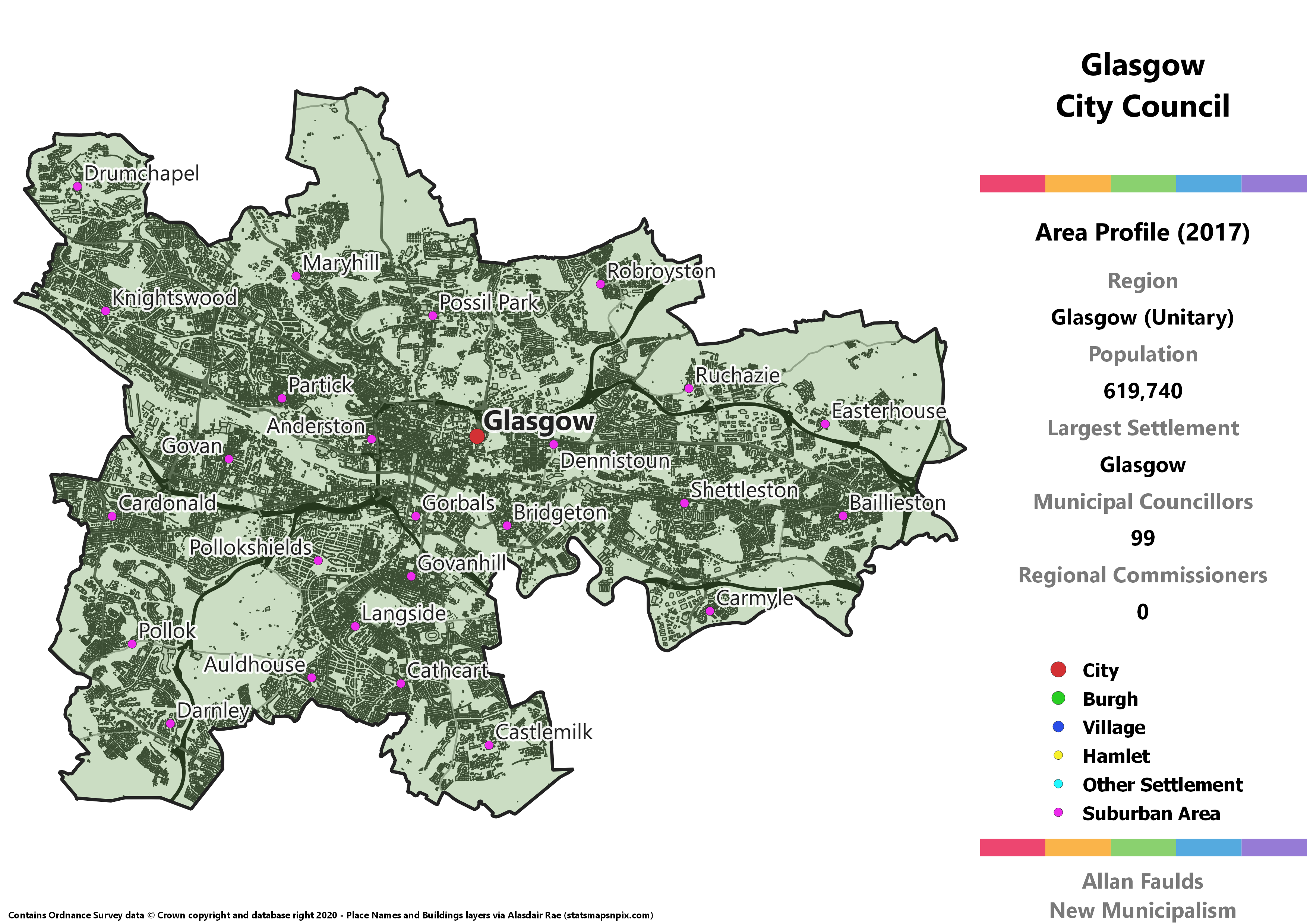Glasgow City
Key Statistics
Municipalities: 1 (Unitary)
Population: 619,740
Largest Settlement: Glasgow
Municipal Councillors: 99
Municipality Description
Glasgow is Scotland’s largest city, and therefore makes for an extremely obvious municipality. Compared to the existing council, this version loses the village of Carmunnock which has been pretty inexplicably part of the city since the 1973 Act. It’s not actually even part of the Greater Glasgow Settlement the way many bordering towns in other Councils are, so it was due a chucking out.
People often call for Glasgow to annex some of it’s suburbs (funnily enough, 9 times out of 10 folk only want to absorb the posh ones, and ignore the poorer ones), despite the city’s already massive size by Scottish standards. I’m strongly resistant to any suggestion the city should be expanded. Apart from the fact Scotland’s local government units are already too big, as outlined in the Clyde Region’s page, adding every area that’s statistically part of Greater Glasgow would effectively wipe Renfrewshire out of existence and consume most of the population of Dunbartonshire. These are big, historic counties, and you need to have a better reason to eviscerate them than “but Glasgow is hungry for more Council Tax”.
It is unarguable that Glasgow sits at the heart of the West Central Belt and has an economic impact over that whole area. Nonetheless, I don’t think that you need to have the city either annex its surrounds or become integrated into a wider Regional Council in order to adequately address those matters which do need co-operation across the conurbation. Formal joint bodies consisting of the democratically elected representatives from the councils they cover, improving on the model of SPT, should suffice.
The somewhat expanded council my calculation calls for results in more seats for every major party based on 2017 results, except Labour who ended up with a proportional share spot-on for a 99 member council when the real one only had 85. The Conservatives are the main beneficiary of the additional seats, having been under-represented thanks to STV, and the Lib Dems just cross the 3% threshold when extrapolating a vote share for them into the handful of wards they didn’t contest in 2017.
